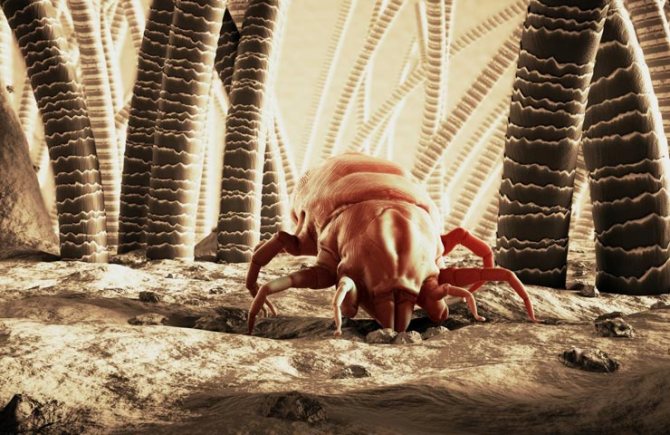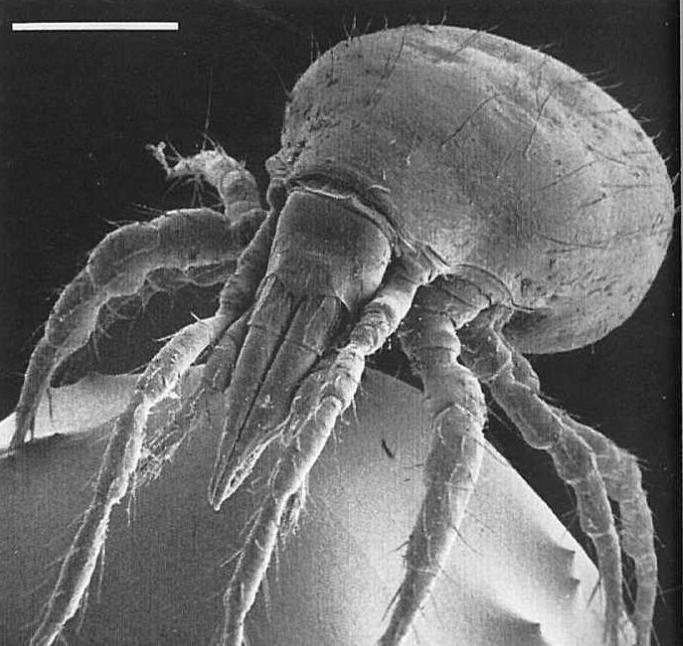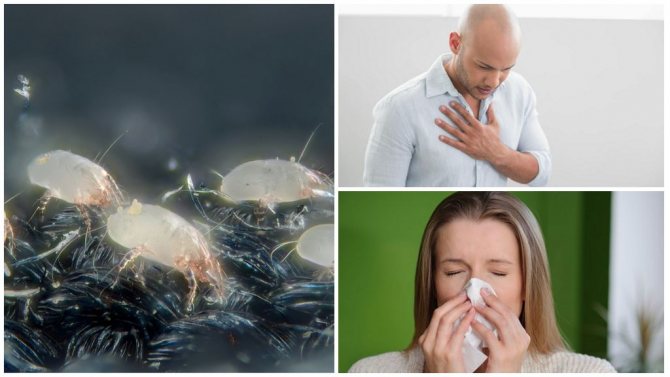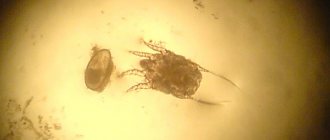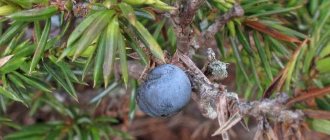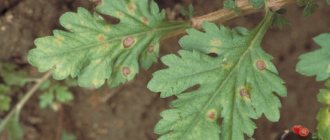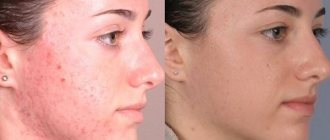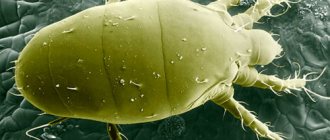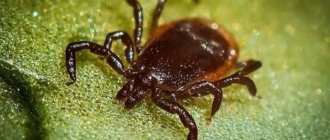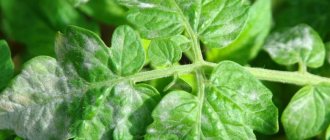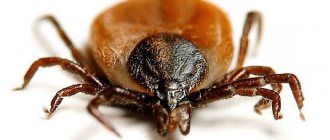Dust mite allergies are not uncommon these days. The abundance of carpets, books and soft toys indoors makes her a constant companion of modern people. This type of allergy develops under the influence of fecal matter and parts of the chitinous cover of dead arthropods present in the air. Close contact with the mites themselves and their waste products makes the mucous membrane and skin more vulnerable and causes a corresponding reaction of the autoimmune system. How to get rid of a home pest and is it possible to do it?
Dust mite allergy treatment
Treatment of dust mite allergy is to observe the following measures:
- Eliminate all possible places of "residence" of ticks as soon as possible, that is, eliminate contact with the allergen.
- Use medications prescribed by your doctor to relieve allergy symptoms.
- Take care of the methods of desensitization, that is, reducing the sensitivity of the human body to the waste products of the dust mite.
Let's take a closer look at each of the above treatment methods:
- You can eliminate contact with an allergen using certain prevention methods, which will be discussed in the appropriate section.
- Dust mite allergy symptoms are treated with antihistamines, corticosteroid and nasal medications, which are prescribed by the attending physician during the consultation. At the first symptoms of allergy, it is necessary to contact a specialist allergist, who can send for examination to a doctor - immunologist for testing. With the help of these samples, it is possible to confirm or deny the presence of allergic reactions specifically to the dust mite components contained in house dust. Also, these tests improve the quality of treatment, since the allergist can prescribe for therapy exactly those drugs that help eliminate the symptoms of this type of allergy. At the same time, patients need to remember that drugs do not remove the root cause of the disease, but only eliminate its manifestations.
Typically, allergic reactions to these allergens are treated with the following antihistamines:
- Telfast is available in pill form and is prescribed for patients over six years old.
- Erius - the drug is available in two forms: in the form of tablets and syrup; the drug is prescribed to patients from one year old.
- Suprastin - available in the form of tablets and liquid for injection; assigned to patients from six years of age.
- Edem - the drug is available in the form of tablets and syrup, which can be used by patients from two years of age.
- Agistam - the drug is produced in the form of tablets and syrup; indicated for use in patients from two years of age.
- Lomilan - available in the form of tablets and suspensions; the drug can be prescribed to patients from two years old.
Aleron - the drug is produced in the form of tablets and is prescribed to patients from six years old.
Nasal medicines for the treatment of allergic reactions include the following:
- Aquamaris - comes in the form of a spray and nasal drops; the drug can be used even for infants due to the safety of its composition.
- Atomer Propolis - the drug is produced in the form of a nasal spray and is indicated for use by patients from one year old.
House dust allergy symptoms
Dust allergy is manifested by pathologies such as bronchial asthma, allergic conjunctivitis, allergic rhinitis and atopic dermatitis. Exacerbations caused by household ticks occur through direct contact and when protein allergens enter the body through the respiratory system.
Symptoms of allergic rhinitis
Household dust is a major source of allergic rhinitis. Allergic rhinitis is a chronic inflammation of the nasal mucosa. It is based on the immune response to stimulation by all kinds of stimuli. The disease manifests itself in a complex of symptoms:
- copious secretion of watery mucus from the nose;
- itchy nose;
- sneezing attacks, often in the morning;
- nasal congestion;
- less often burning, itching in the nasopharynx, in the area of the palate.
Due to allergic rhinitis, worsening mucus outflow from the paranasal sinuses, peeling and redness of the labial groove appear, on the wings of the nose, nosebleeds due to increased blowing and picking in the nose, pain in the ears, especially when swallowed, hearing problems, sore throat , dry cough. General symptoms of the disease: headache, hard to concentrate, lethargy, irritability, malaise, poor appetite, fatigue quickly sets in, poor sleep, depressed mood, sometimes sick from swallowing a lot of mucus, fever (extremely rare).
With allergic rhinitis, there are visual disturbances: fear of light, itching, yellowness of the sclera and ophthalmic membrane, lacrimation, dark circles under the eyes. Allergic rhinitis can exist as an independent disease or begin simultaneously with bronchial asthma. These two pathologies have a proven close relationship. The onset of allergic rhinitis in early childhood is the cause of the formation of allergic asthma in adolescence, as well as in adulthood.
Symptoms of bronchial asthma
Bronchial asthma is a chronic inflammation in the bronchial wall, resulting in spasm, edema of the mucous surface, increased mucus production and bronchial obstruction in response to causative factors. Recognizing the disease in typical cases is not difficult. This is an episodic shortness of breath, an attack of suffocation, which is accompanied by wheezing with a whistling. Sometimes a typical attack is absent in the clinical picture. In this case, the symptoms of allergic asthma are as follows:
- a feeling of squeezing in the chest area;
- loud paroxysmal wheezing with a whistling, aggravated on exhalation and passing with the use of bronchodilator drugs;
- insignificant secretion of mucus;
- unproductive cough (an infrequent symptom, especially in a child).
Symptoms are more likely to appear at night or early in the morning. When diagnosing bronchial asthma, a hereditary predisposition to allergies, the presence of concomitant diseases (for example, allergic rhinitis) are taken into account.
Symptoms of allergic conjunctivitis
Allergic conjunctivitis is a disease characterized by inflammation of the conjunctiva of the eyes caused by a causative allergen. Symptoms of pathology: edematous eyelids, a feeling of sand in the eyes, itching, redness and swelling of the conjunctiva, lacrimation, fear of light.With hypersensitivity to house dust, the disease proceeds in a year-round form. Allergic conjunctivitis of this type is characterized by a subacute form of the process with unexpressed external signs, a combination with bronchial asthma and / or atopic dermatitis, allergic rhinitis. Moderate burning of the eyes is more often noted, typically insignificant discharge, recurrent itching of the eyelids.
Symptoms of atopic dermatitis
Atopic dermatitis is manifested by skin rashes with intense itching, weeping, inflammation.In chronic forms, skin tightening, peeling, and constant infection gradually develop. The disease often occurs at an early age (up to 5 years) and is a harbinger of the development of allergic lesions of the respiratory system. In adult patients, household allergens provoke illness in 38% of cases.
Symptoms in children and adults
Dust mite allergy can be suspected during general cleaning.
With a predisposition to this disease and with the highest concentration of insect particles in the air, a person has the following symptoms:
- Repeated sneezing, nasal congestion.
- Wheezing and tightness in the chest.
- Dyspnea.
- Lachrymation and itching of the conjunctiva.

It is easy enough to rule out other reasons for such changes. It is enough to rinse the nasal passages, rinse the mouth and go to another room.
If it was an allergy to dust and mites living in it, then all the symptoms will gradually go away.
The main manifestations of intolerance to the waste products of dust mites include a number of diseases, these are:
- Allergic rhinitis. The pathology is manifested by nasal congestion, severe sneezing, itching inside the nose, the release of abundant and transparent secretions. A similar reaction can manifest itself both immediately after a person enters a room with a large volume of insects, and gradually over several hours.
- Conjunctivitis. Inflammation of the conjunctiva is considered the most common manifestation of tick intolerance. The disease is manifested by reddening of the conjunctiva itself and the whites of the eyes, tearing, itching of the eyelids. Some people have a symptom such as the vagueness of the objects in question. All manifestations are characterized by increased discomfort when wearing contact lenses.
- Bronchial asthma. This pathology can be provoked for the first time by both dust mites and other types of allergens. But under the influence of microscopic insects and their waste, new attacks of the disease arise, which are especially difficult for children. The attack begins with a feeling of tightness in the chest, dry cough, difficulty breathing, wheezing.
- Dermatitis. Toxic substances of fecal balls of domestic arthropods, when they settle on the skin, lead to irritation, severe itching, and urticaria. With constant exposure to a negative factor, dermatitis that is difficult to treat occurs; in children, a dust mite can cause eczema.
POPULAR WITH READERS: Professional medical aid, reception of an allergist
Quincke's edema on dust mites is rarely observed, but it is completely impossible to exclude such a reaction of the body.
Such a serious condition is often provoked by the simultaneous exposure to several allergens at once - mites, plant pollen, and chemicals.
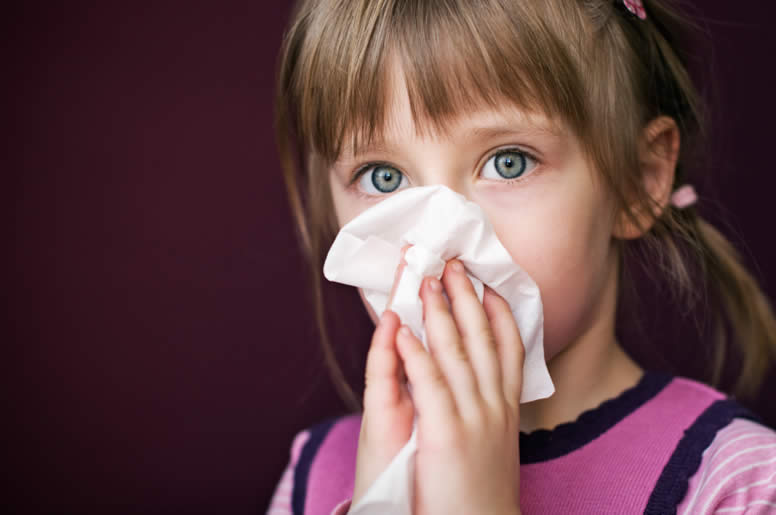

Allergens
In addition to the main culprit of house dust allergy - waste products of the Demodex mite, this disease can be caused by other allergens contained in dust particles:
- hairs of pets, including cats and dogs, hamsters and guinea pigs, and so on;
- the remains of cockroaches and other beetle insects that are found in the house;
- bird down, from which pillows, blankets, feather beds are made;
- book dust - waste products of paper microorganisms;
- mold and other fungal formations that appear in damp rooms.
Symptoms
Different types of allergies have similar symptoms, so the diagnosis is complicated and requires special research.
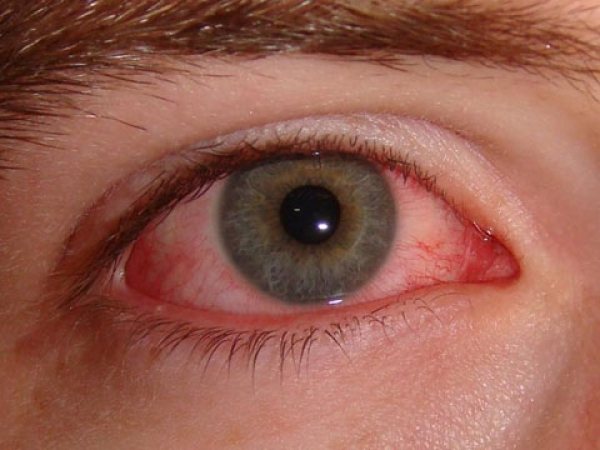

Photo: Redness of the clases
Signs of dust allergy include:
- runny nose, while the phenomena of rhinitis are prolonged, accompanied by sneezing, accumulation of mucus in the nose;
- redness of the eyes, accompanied by lacrimation, and turning into conjunctivitis;
- inflammation of the mucous membrane of the respiratory tract, provoking a cough;
- edema of the mucous membranes of the larynx, bronchi, leading to shortness of breath and suffocation.
Symptoms
First of all, the respiratory system and skin suffer from this insect. The patient begins to complain about the following phenomena:
1.Nasal congestion, discharge and frequent sneezing;
2. redness in the eye area and increased work of the lacrimal glands;
3. regular dry cough;
4. wheezing in the chest;
5. Difficulty breathing (this symptom can range from shortness of breath to attacks of suffocation);
6. irritation on the skin (redness and various rashes may form);
7. development of bronchial asthma.
If you notice signs of such an allergy in yourself, you must immediately make an appointment with an allergist, who will conduct diagnostic studies and select an adequate method of treatment for you.
Disease prevention
It will never be possible to completely get rid of dust mites in your apartment or house. These tiny insects will always live next to a person, but you can make sure that they will not have a negative impact on the health of the people living in the apartment.
To minimize the risk of developing possible allergic reactions and prevent exacerbation of bronchial asthma, you can take the following measures:
- It is necessary to get rid of those things in which the largest concentration of arthropods is possible. These are furs, soft toys, carpets, old things, books.
- Carrying out washing of all things at a temperature not lower than 60 degrees.
- Using blinds or light curtains on the windows. Thick curtains collect dust and are rarely washed.
- It is always advisable to store clothes, books, fur products only in lockable dressers and wardrobes.
- Feather pillows and woolen blankets should be exchanged for bedding, fillers that can be washed frequently and do not accumulate allergenic elements.
- It is recommended to do wet cleaning in living rooms daily. Mites are killed by salt, so you need to add a few tablespoons of salt to the water for mopping and cleaning carpets. Tea tree oil has a similar effect.
- It is advisable to install air cleaners with high-quality filters in apartments.
- Rooms need to be ventilated regularly.
- It is advisable to use vacuum cleaners for cleaning carpets and floors.
- During winter, it is recommended to freeze bedding outside for several hours. In summer, things need to be roasted in direct sunlight. Both low and high temperatures lead to the death of ticks and their egg-laying.
- When cleaning, people with allergic reactions are advised to wear a mask.
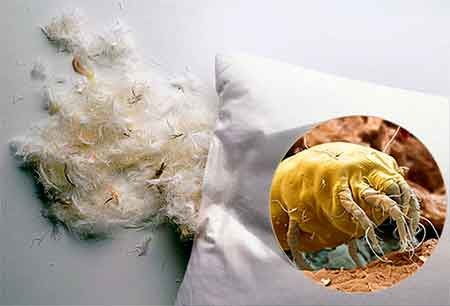

The above measures are especially necessary for people with a predisposition to allergies.
The lack of reactions to insects is not yet an indicator that they will never be. If there are a lot of ticks' life products in the apartment, then the deterioration of health will not be long in coming.
Particular attention should be paid to the bedroom in terms of organizing the living space. This room needs to be equipped with more easy-to-handle furniture made of plastic, wood or iron.
The floor should be covered with a material that can be washed well with water - linoleum, wooden, painted boards.
All capes and curtains are made of lightweight materials; it is recommended to wash them at least once every two weeks in hot water.
There is no need to let pets into the bedroom, since they also carry the ticks themselves and leave food for them, that is, desquamated epithelium.
In stores, you can also purchase special products used to treat all surfaces in the house from ticks. They are used periodically and only in accordance with the rules of the attached instructions.
Strengthening general immunity is also considered the prevention of allergic reactions to house dust, which helps a healthy lifestyle, good, natural nutrition, taking vitamin complexes, hardening, and daily walking.
Preventive measures
In order to never share your home with bed mites, it is enough to follow this small list of rules:
- slowly get rid of feather bedding, carpets, rugs, and put special covers on mattresses;
- periodically take pillows, blankets, mattresses to the balcony in winter for several hours, and also warm them up several times over the summer under the sun's rays;
- regularly ventilate the room, do not overload it with "dust collectors";
- carry out daily wet cleaning using a 20% saline solution; for "general" cleaning use a steam cleaner;
- boil bedding or wash it at high temperatures;
- monitor the hygiene of your pets.
We hope this article will help you deal with intruders and that bed mites will never visit your home again.
What to do?
If you are allergic to house dust mites, you should:
- Seek advice from an allergist - immunologist. According to the clinical picture of the disease, the specialist will prescribe an examination, according to which he will determine the cause of the allergy, give the necessary recommendations, and prescribe drug treatment.
- If it is necessary to clarify the diagnosis, conduct an examination by the method of specific tests - skin tests. The conditions for such an examination are the absence of taking antihistamines 10-14 days before the allergy test.
- If allergy to dust and mites is confirmed, it is necessary to reduce the degree of influence of the allergen on the patient, namely to minimize the amount of dust. For this you need:
- Remove all carpets and rugs. Carry out wet cleaning every day, you can not use a regular vacuum cleaner, because the reverse air flow in it raises more dust than it sucks in. You can use washing vacuum cleaners, which are specially designed for damp cleaning of the room.
- Replace old upholstered furniture and do not use new ones for more than 5 years, since dust accumulates in it, which is difficult to get rid of. If this is not possible, then tighten the furniture with polyethylene covers, in this case it will be easy to remove dust.
- Replace heavy curtains with lighter ones that are comfortable for frequent washing.
- Pillows and blankets should be filled with artificial filler (synthetic winterizer, holofiber, bamboo), they do not accumulate dust and are easy to wash.
- Books should be stored in closed bookcases and shelves.
- Use air purifiers, especially in bedrooms.
Allergy treatment is carried out under the supervision of a specialist with course receptions of antihistamines (Zyrtec, Zodak, Suprastin). For skin manifestations, creams and ointments are used: bepanten, panthenol, radevit, advantan, elok, which are applied to the affected areas once or twice a day.
To kill ticks, there are special treatments for upholstered furniture and mattresses. In this case, there is a need for additional cleaning with preparations to remove particles of the shell of dead ticks and their waste products.
Why do dust mites appear?


From the name it is clear that pests live in areas of mass accumulation of dust. They spread in any room where there is dust. If you keep the apartment clean, their population will be negligible and will not harm a person. However, if you do not carry out timely cleaning and do not eliminate the possible habitats of parasites, the manifestation of the negative impact of insects on humans is inevitable.
Dust mites can be caused by:
massive heaps of things and trash in the apartment; irregular wet cleaning; incomplete cleaning of the room (not enough attention is paid to processing corners, surfaces under furniture); old bedding, bulky curtains; the location of the apartment in areas with abundant dust.
Mites enter a person's home on outer clothing or on the fur of pets, and also penetrate the apartment with dust through windows and doors.
Where do dust mites live?


Once in a dwelling, the parasites immediately populate in habitable places. They feed on dead cells of the epidermis, therefore they live where dead cells, together with dust, accumulate most of all. It can inhabit:
- in pillows with natural feathers;
- in duvets and quilts;
- in mattresses;
- in carpets with natural pile;
- in bed linen;
- in the upholstery of sofas, armchairs, chairs;
- in soft toys;
- in unused clothing;
- in curtains and curtains;
- on dusty bookshelves;
- in a vacuum cleaner in a dust bag.
It has been proven that in a dwelling where there is a lot of trash, the number of individuals in the population reaches 2 million.
How to understand that a dust mite has appeared in an apartment
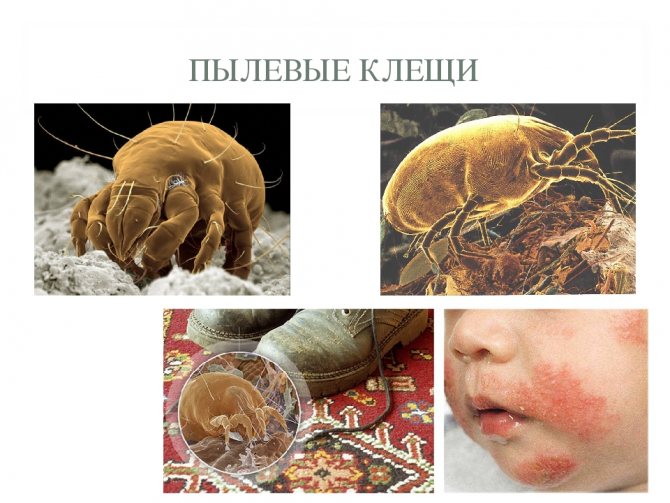

Since dust mites are tiny, you won't be able to notice their presence with the naked eye. The first and main sign of the appearance of a parasite in the room will be your well-being.
A change in your health status indicates a dust mite allergy. To diagnose it, consult an allergist. The specialist will prescribe special tests to identify the parasite.
As soon as you are sure that there is a population of dust mites in the apartment, immediately start fighting the pest.
Which pillows don't get dust mites
It is worth noting that dust mites appear only in feather pillows. If the bedding is stuffed with high-quality artificial material, and it, in turn, is replaced by a new one every 3-5 years, the parasite will not dwell in such a pillow.
Habitat
At home, ticks most often settle in bed. The main reason is the availability of food. Bed pests feed on particles of exfoliated skin, sweat. The optimal conditions for existence are warmth, humidity, and the absence of bright sunlight. In a person's bed, all these conditions are met.
Mattress mites settle in furniture, soft toys, interior items, remain on any surface where a large layer of dust accumulates. It is safe to say that the furniture mite is everywhere, always and everywhere. The ideal place is an unmade bed, an old mattress, feather pillows, unwashed bedding with particles of dandruff, leather, sweat.
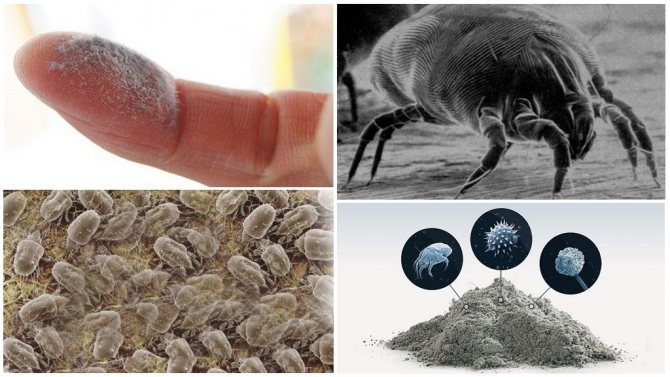

Bed or dust mites
Signs of a dust mite allergy
In many cases, an allergic reaction to a tick manifests itself as rhinitis. The symptoms of this condition are as follows:
- sneezing (may be repeated, in the form of seizures);
- watery or thick mucous discharge from the nasal passages;
- itching and burning in the nose;
- nasal congestion.
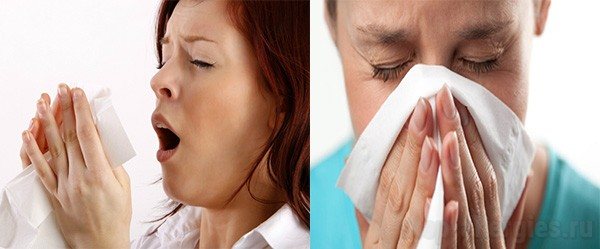

In infants, allergic rhinitis is especially difficult. At this age, the mucous membrane of the child's nasal passages is richly vascularized, so its swelling develops quickly. Breathing through the nose is very difficult, which makes feeding difficult. Thus, the symptoms of rhinitis are accompanied by a lack of appetite, insomnia and irritability of the child.
In addition, a house dust mite can provoke the development of conjunctivitis, dermatitis and asthma. In such cases, the following symptoms may occur:
- lacrimation and redness of the whites of the eyes;
- pain in the eyes;
- poor tolerance to bright light;
- itchy skin;
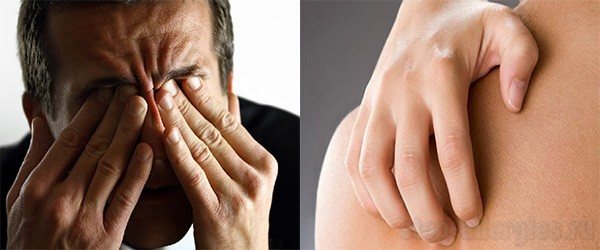

skin rashes localized in the face, neck, armpits, elbow and knee joints, perineum, scalp of the child;
inspiratory dyspnea (difficulty breathing), wheezing, paroxysmal cough, accompanied by the discharge of a small amount of viscous transparent sputum.
Rarely, an allergy to dust mites is accompanied by the development of angioedema. If you experience symptoms of this condition (hoarseness, a feeling of suffocation, swelling of the face, upper or lower extremities), you should consult a doctor as soon as possible.
When a dust mite was the cause of poor health, the following features of the course of allergies attract attention:
- remission outside the home;
- relapse upon contact with a large number of ticks (during cleaning or sleeping at night);
- seasonality of exacerbations of allergies (August - October) associated with the active reproduction of ticks;
- exacerbation in the autumn and winter, due to the child being at home and the refusal to air the rooms;


concomitant feather allergy, as well as food allergy to seafood (crabs, shrimps, crayfish).
Most often, allergic reactions to house dust mites occur in children. This is due to the increased reactivity of the child's immune system. In addition, sensitization in children occurs faster, because they are more in contact with the tick (crawling, playing with soft toys).
When there are obvious symptoms of tick allergy, medication is indispensable. Systemic treatment involves taking antihistamines (Claritin, Semprex, Astemizole). In some cases, local treatment is necessary. To eliminate allergy symptoms, your doctor prescribes the following antihistamines:
- nasal spray "Histimet" for rhinitis;
- eye drops "Allergodil" for conjunctivitis;
- gel "Soventol", "Fenistil" or ointment "Zirtek" for dermatitis.


In severe cases of an allergic reaction to a house tick, it is necessary to use nasal and eye drops with a vasoconstrictor effect (Sanorin, Afrin, Octylia, Vizin), as well as creams and ointments with a hormonal component. Treatment with these agents should be brief, as with prolonged use they cause serious adverse reactions. Many of them are contraindicated for children, pregnant and lactating women. It is highly undesirable to use such drugs without first consulting a specialist, especially if a child is being treated for tick allergies.
To alleviate the course of rhinitis and dermatitis in children, you can use safe means: nasal spray "Aqua Maris", "Quicks" or "Aqualor", cream "Losterin", "Videstim" or "Desitin". Ancillary treatment includes vitamin therapy, taking warm baths with decoctions of medicinal herbs (chamomile, sage, calendula). Special sprays are produced that destroy dust mites, they are designed to treat rooms and objects. Their use can reduce contact with ticks and make drug treatment more effective.
To prevent exacerbations of tick allergies, desensitization can be done. The essence of this procedure is that the dust mite extract is injected into the body. Usually, injections are carried out intermittently throughout the year, gradually increasing the dosage of the injected tick extract. As a rule, such treatment over time leads to a decrease in the frequency and severity of relapses. Specific immunotherapy has contraindications and some risks, so it is allowed to do it only after a complete examination.
Dust mites
Household mites of the pyroglyphid families Dermatophagoides farinae and Dermatophagoides pteronyssinus are the main objects of increased sensitivity to house dust. House dust is a habitat for them. D. pteronyssinus and D.farinae belong to the group of permanent inhabitants of dust and occupy a dominant position in relation to other species of mites in living quarters. D. pteronyssinus feeds on peeled scales of the human epidermis and microflora developing on them. D. farinae also feed on food residues in the dust.
The greatest allergenic activity is not the mites themselves, but their small fragments and larval skins, as well as the waste products of dust mites - fecal particles. During the research, about 20 tick-borne allergens were isolated, represented mainly by the digestive enzymes of ticks. To be more precise, the immediate stimuli are proteins with low molecular weight. They dissolve well in mucus and other organic fluids. House dust mites multiply rapidly at high humidity and temperatures from 17 to 24 ° C. The highest number of them is found:
- in bed linen - 91.5%;
- in carpet dust samples - 84.8%;
- on bookshelves - 45.8%.
The prevalence of ticks in the house depends on a number of microclimatic characteristics of the place of residence (indoor humidity, temperature), biotic factors - the presence of yeast and mold fungi, social and household level of living. Excellent conditions for the reproduction of ticks are created with a large crowd of people in a small living area, with occasional wet cleaning of the room.
Microscopic mites of the genus D. Farinae and D. Pteronyssinus most often provoke rhinitis and bronchial asthma. To a lesser extent (10 - 14%) the development of atopic dermatitis is provoked. Being permanent residents, household ticks cause progressive diseases. Scientists are surprised to say that the number of ticks, their species diversity in places where people live is increasing.
Possible consequences of bites
What kind of danger can such creatures pose? It should be noted right away that the adults themselves, or their larvae, do not bite a person. Those reddish spots, streaks, bumps, rashes and other manifestations that show themselves on the skin are the result of allergies. This problem with human health arises from the feces of these parasites, and not from themselves. In general, ticks can cause the following reactions and diseases with their excrement:
- rhinitis;
- asthma;
- bronchitis;
- acariasis;
- edema of Quincke;
- allergic disease affecting the respiratory system;
- dermatitis (atopic);
- conjunctivitis.
Bed mite allergy treatment
The first option is medication.
After the immunologist gives a positive answer that you have a similar allergy, you will be assigned special medications. Such medicines in their composition will necessarily have antihistamines, corticosteroid and nasal substances. Also, the doctor may well offer you injection treatment. You will be given a procedure called Hyposensitization. During this "healing", a subcutaneous injection with a small amount of allergens will be injected. They will cause addiction to the provocateur, the development of bodies fighting against him in the body. As for medicines, the most affordable and effective are:
- The drug "Erius". Application is allowed from one ode, which allows young mothers to treat their baby. Relieves complications from the respiratory tract. Available in syrup and tablet form.
- The drug "Aquamaris". Even babies are credited. It has a convenient form in the form of drops and spray. Cleans the sinuses from the accumulation of allergens.
- The drug "Telfast". Eliminates most of the symptoms of allergic reactions. The release is allowed in the form of tablets. It is recommended to use it only from the age of six, not earlier.
Second option: traditional medicine.
As for this method of treatment, everything is simple.For a gradual "healing" of the body and getting rid of provocateurs, you just need to rinse your nostrils with a special solution, which is prepared on the basis of salt and ordinary water.
It is recommended to do this procedure every two or three hours. Take half a teaspoon of salt (you can use sea salt) and dissolve in a glass of water. That's all! And now, the time has come for auxiliary and very useful rules that will help get rid of and reduce the risk of complications of bed mite allergy.
- Linens. It is clear that this place is the first and most important thing in the moments of the multiplication of allergens. Change your underwear as often as possible.
- Do your wash at a temperature of at least sixty degrees, otherwise you will not kill the mites that already exist there.
- You can use special additives based on acaricidal materials.
- Replace feather pillows and blankets, wool bedspreads and furniture covers with less allergenic materials. There are quite a lot of them on the market.
- Dry and ventilate bedding frequently. Try not to lie down on the pillow with wet hair; wetting it will further increase the proliferation of mites.
- Keep pets out of bed, as they are excellent carriers of these allergens.
- Ventilate your bedroom, the more often the better.
- Install air filters. Similar air purifiers that minimize the amount of mite particles in the air.
- Do a wet cleaning of the rooms daily.
If you find an error in the text, be sure to let us know about it. To do this, simply select the misspelled text and press Shift + Enter or just click here. Many thanks!
Thank you for notifying us of the error. In the near future we will fix everything and the site will be even better!
Diagnostics
An allergic person should definitely visit an allergist if symptoms worsen at home, especially in the early morning or before bed. An allergist is a specialist who diagnoses and treats this kind of disease. Among other things, when carrying out certain diagnostic manipulations, it can be determined that it is the bed mites that are the cause of the corresponding condition in the patient.
The doctor will apply a variety of diagnostic tests to determine if the microscopic tick is showing symptoms. The most common type is a skin prick test. During this test, the allergist will prick the skin area with a small amount of the allergen extract.
After 15 minutes, it will be possible to see if there are any changes in the skin in the form of negative reactions at the site of a particular injection. If it shows a positive reaction to a bed mite allergen, in the causes of severe coughing, sneezing and other symptoms. There will be no more doubt. There will be severe swelling around the injection site and the area may also become red and itchy.
A blood test is sometimes used instead of a skin test
It should be noted that a blood test can only show the presence of antibodies, so the results may not be as accurate.
The best treatment option is to limit your exposure to dust mites. If that doesn't work, there are several over-the-counter or over-the-counter medications that can help relieve allergy symptoms.
However, it must be remembered that ill-considered self-medication can end in a serious condition, up to loss of consciousness, therefore, all drugs of this series are taken exclusively as prescribed by a doctor.
- Antihistamines such as Allegra and Claritin. These remedies can help reduce sneezing, runny nose, and itching.
- Nasal corticosteroids, such as Flonase or Nasonex, reduce inflammation with fewer side effects than other drugs I take by mouth.
- Decongestants such as Sudafed or Afrin reduce the swelling of the mucous membranes in the nasal passages, making breathing easier.
- Medicines that combine antihistamines and decongestants, such as Actifed or Claritin-D
Other treatments that may help include:
- Cromoline sodium.
- Leukotriene modifiers such as Singulair, Accolate, Zyflo.
- Customized immunotherapy.
Flushing your nasal passages with warm salt water on a daily basis is another effective way to remove allergens from your sinuses.
Brief characteristics of the dust mite
The dust mite is considered a parasite, although scientifically it is not. Rather, he is our symbiont, living nearby and eating the remains of dead organic matter: hair, dandruff, sweat secretions, peeled epithelium, pet hair. Moreover, these arachnids can be safely attributed to the group of non-domesticated animals, the existence of which is closely related to humans.
A dust mite cannot be seen without a microscope. Its size ranges from 0.2 to 0.5 mm. The normal lifespan of both sexes is 70–80 days. During this time, the female manages to lay more than 50 eggs. The best habitat is a room with high humidity and temperatures in the range of 20-23 ° C.
Contrary to popular belief, the majority of ticks are not in the far corners of an apartment, but very close to a person - in bedding. The right temperature, the optimal humidity level and, most importantly, plenty of food - all this makes the fibers of the fabric a very comfortable place.
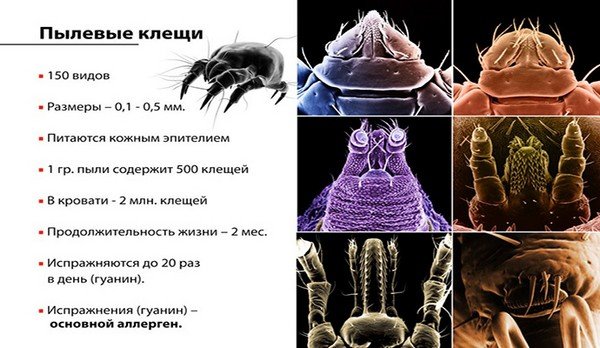

Children and adults with weakened health and low immunity are especially affected by the presence of small arachnids. In the cold season, the number of cases of dust mite allergy increases dramatically. This is due to the rare ventilation of the room and the lower quality of cleaning. It is difficult to knock out and dry bedding and carpets at this time of year. In addition, many are laying back floor coverings, rugs and paths removed for the summer period.
Treatment of the disease
Treatment for any type of dust mite allergy begins with eliminating contact with the irritant.
At home, it is necessary to get rid of all the "dust collectors", carry out high-quality wet cleaning, and ventilate the room well.
To eliminate all signs of disease, the doctor prescribes general and local antihistamines.
Their use leads to a decrease in allergy symptoms, that is, to the elimination of sneezing, nasal congestion, conjunctivitis, and facilitates the course of bronchial asthma.
Drug treatment
Of the systemic antihistamines, that is, drugs for internal use, most patients are prescribed:
- Telfast. You can use the medicine from the age of six.
- Erius - available in syrup and tablets. Children from one year old are prescribed in syrup.
- Agistam is prescribed from the age of two in the form of a syrup. For children over six years of age and adults, in pill form.
- Lominal is available in suspension and tablets. Doctors are appointed from the age of two.
- Suprastin is a good antihistamine, but has a pronounced side effect - drowsiness.
- Cetirizine is good at eliminating the skin symptoms of allergic reactions.
- Dimethindene can be used in tablets and as a gel for application to the skin for rashes.
- Fenistil - antihistamine drops indicated for use from birth.
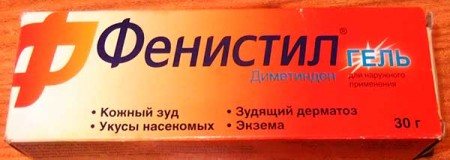

Additionally, eye and nasal drops containing anti-allergic and anti-inflammatory components can be prescribed.
To relieve the symptoms of rhinitis in children, you can use drops or spray Aquamaris, this tool cleans well the nasal cavity.
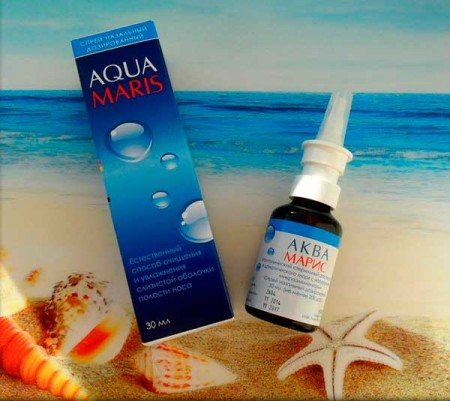

A modern method of treating allergies is desensitization (ASIT - therapy), which consists in the gradual introduction of microscopic doses of an allergenic irritant under the human skin.
This method of therapy leads to the fact that the body gets used to the allergen and no longer reacts so sharply to its presence in the body.
Desensitization allows you to significantly reduce all manifestations of the disease, and in some cases even completely eliminates allergies.
Treatment with folk remedies
With the help of folk remedies, it is sometimes possible to increase the work of the immune system, which in turn leads to a decrease in the appearance of allergic reactions.
Strengthens the defenses of the herb echinacea, ginseng, lemongrass. These funds need to be drunk in courses.
With constant allergies, you can drink a series of tea instead of tea, take a mummy, and treat with eggshells.
When the first signs of dust allergy appear in the house, you need to prepare a saline solution. It rinses the oropharynx, which leads to the washout of allergens.
What are the folk methods?
One of the most effective ways for individual intolerance is considered to be rinsing the nose with an aqueous solution, which contains salt and soda. The procedure should be performed every 3 hours. A saline solution will also help in the absence of soda.
You can also do simple inhalations with water vapor. They are very good at relieving swelling of the mucous membranes. This procedure is similar to a sauna. Here the patient must breathe in vapors.
When treating with folk methods using medicinal plants, one must be careful and careful, since the broth may not be suitable for a person, then an attack will occur. In this case, it is advised to consume a small amount of the drink, and if after a certain amount of time the reaction does not follow, then take it.
Air conditioning at home is also a great treatment. With its help, the air is ionized by negatively charged particles.
In addition to all the listed methods, it is necessary to follow a diet, which, as a rule, is prescribed by a specialist. A person should exclude chocolate and coffee, as well as corn from their diet.


